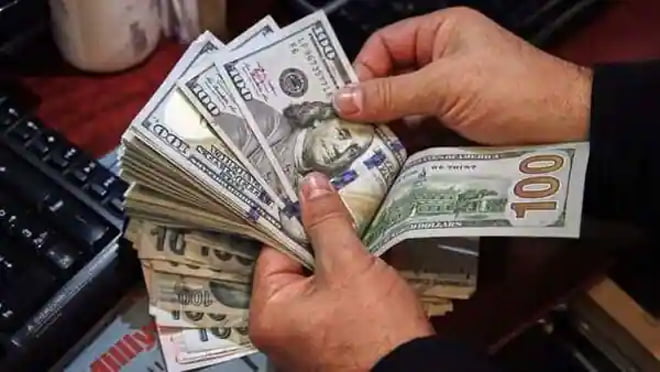Forex reserves slump to over 2-Year low as RBI defends Rupee to below 80

Forex reserves slump to over 2-Year low as RBI defends Rupee to below 80.
Reserves of foreign currency decreased to $564.053 billion. True to its word, the Reserve Bank of India intervened to prevent the rupee from falling to more than 80 to the dollar during a week in which the dollar increased to levels not seen in more than two decades. As a result, India’s foreign exchange reserves fell to their lowest level in more than two years, marking the third week in a row that they have decreased.
How much have the foreign exchange reserves fallen?
The nation’s foreign exchange reserves decreased by $6.687 billion to $564.053 billion in the week ending. According to the RBI’s weekly statistics, August 19 marked the lowest level in more than two years and the third straight week of decline. Last week, the $6.687 billion decline was the largest since the middle of July.
The nation’s import coverage decreased by $2,238 to $570.74 billion in the previous week, ending August 12. India’s foreign exchange war chest has been declining every week since the beginning of July, except for the rise in the final week of July, which appears to be a statistical outlier. Since Russia invaded Ukraine in late February, 20 out of 26 weeks have fallen. The decline from roughly 74 to nearly 80 rupees to the dollar, level analysts claim the RBI fiercely defended, is reflected in the drop in. Since the Ukraine crisis, foreign exchange reserves have increased by nearly $80 billion and are now just over 67 billion.
The dominance of the dollar on international markets, fueled by a capital flight from assets denominated in other currencies to those almost exclusively denominated in dollars, has decided the future of the Indian rupee. For the third time in a row, the Indian rupee depreciated against the dollar on Friday as pressure from higher oil prices and the dollar dimmed some of the optimism surrounding a report about including the Asian nation in a highly sought-after bond market Index for emerging markets.
According to The Financial Times, JPMorgan is looking for investor feedback to determine whether to include a sizable portion of the Indian government bond market in the closely watched GBI-EM Global Diversified index of local currency debt. However, this influx was not enough to support the rupee, according to Kunal Sodhani, vice president of the global trade center at Shinhan Bank, who spoke to Reuters.

“I don’t believe the report has any bearing on today’s meeting. However, as the dollar index approaches 109 and… there is hardly any inflow. As a result, the rupee is weakening, according to Mr. Sodhani.
“Oil has recovered to $102, and that pressure is present because the fundamental reality in India has not changed. The number of trade deficits continues to be a significant worry.
According to Arnob Biswas, head of research at SMC Global Securities, “the dollar bid remains strong from the oil marketing firms, as exporters jump in to lock in (higher) forward rates.”
The technical picture for the rupee “looks tired,” Mr. Biswas continued, with the Reserve Bank of India potentially attempting to defend the 80 levels on the one hand and strong dollar demand from importers on the other.
The RBI intervened and made it clear that it would take all necessary measures to safeguard the rupee from excessive volatility to lessen the impact of a geopolitical event on the overall economy.
By selling dollars on the spot and futures markets, the RBI has contributed to keeping the value of the Indian rupee below that level, despite the rupee briefly reaching its all-time low of 80 against the dollar. The country’s import coverage has decreased as a result, according to the central bank. India continues to have the fourth-largest foreign exchange reserves in the world, according to RBI Governor Shaktikanta Das, despite the central bank raising rates for the third time in a row at the most recent rate-setting meeting.
S&P Global Ratings said on Thursday that a report demonstrated that India has strengthened its defenses against cyclical difficulties and has enough foreign exchange reserves to withstand credit pressures.
Director of S&P Sovereign & International Public Finance Ratings Andrew Wood stated during the India Credit Spotlight 2022 webinar that the nation has a strong external balance sheet and little external debt, making debt repayment less expensive.

S&P Global Ratings said on Thursday that a report demonstrated that India has strengthened its defenses against cyclical difficulties and has enough foreign exchange reserves to withstand credit pressures.
Director of S&P Sovereign & International Public Finance Ratings Andrew Wood stated during the India Credit Spotlight 2022 webinar that the nation has a strong external balance sheet and little external debt, making debt repayment less expensive.
According to Wood, “the nation has bolstered buffers against cyclical issues like the one we’re facing right now.” He continued by saying that the rating agency did not anticipate the short-term pressure significantly impacting India’s creditworthiness.
When it detects volatility in the forex markets, the RBI has a well-publicized policy of intervening, but the central bank never specifies a target level. As a result, it successfully defended the rupee’s appreciation above the 80-to-the-dollar threshold in the most recent installment.

According to a different Reuters report, India could encourage exporters to make rupee-based agreements to increase the currency’s attractiveness and boost commodity sales to Russia, which have been declining due to sanctions from the west. However, these Reuters sources claim that because bankers and dealers are still awaiting more information about the government’s and central bank’s incentives procedures to use the rupee, they haven’t yet increased the number of settlements made using the currency.
According to a separate study by the financial markets division of the RBI’s Saurabh Nath, Vikram Rajput, and Gopalakrishnan S, reserves were depleted by 22% during the 2008–2009 global financial crisis. On an established basis, the global financial crisis of 2008–09 caused a drawdown in reserves of $70 billion. During the COVID–19 period, this amount dropped to $17 billion, and on July 29 of this year, as a result of the invasion of Ukraine, it rose to $56 billion. But for the time being, the current crisis is far from over and may result in further depletion of the country’s foreign exchange reserves.
edited and proofread by nikita sharma




